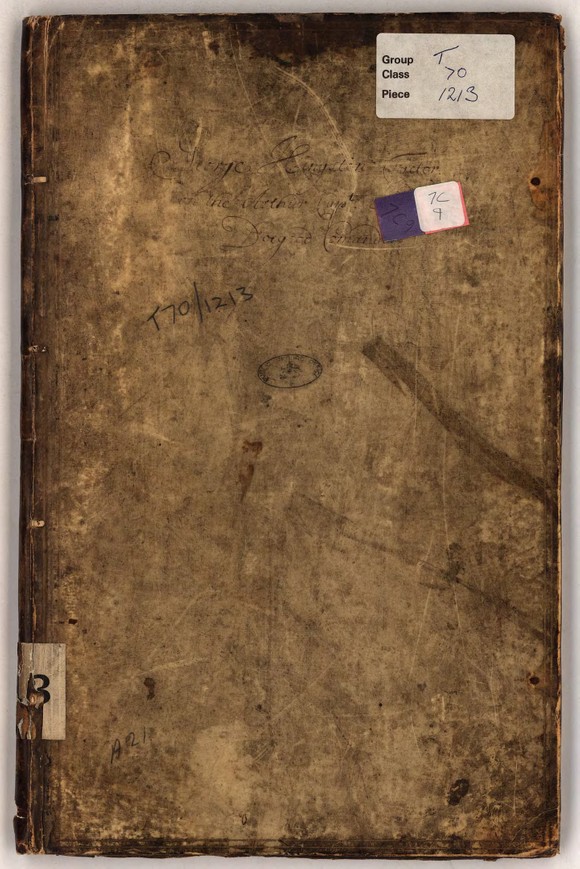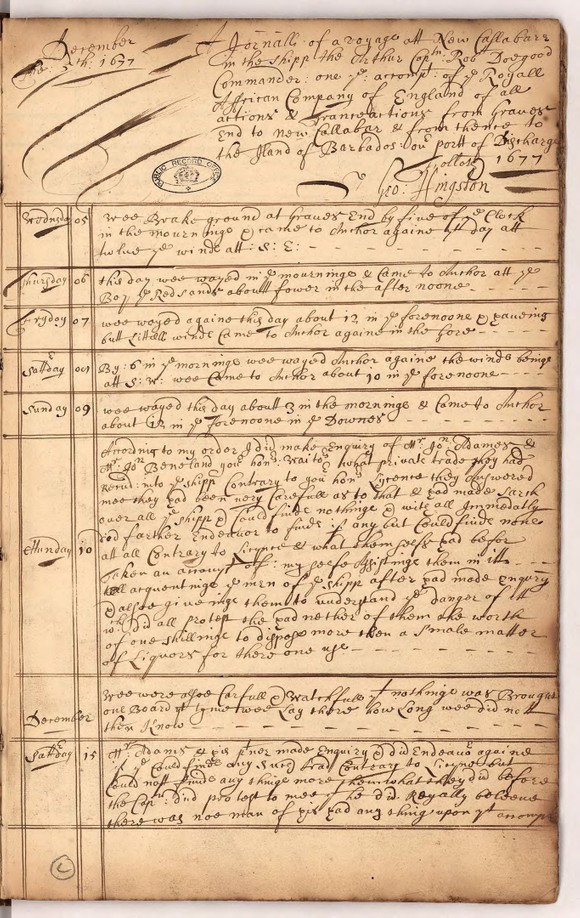Starting from:
$0
Slave Ship Arthur 1677 Journal
Slave Ship Arthur 1677 Journal
A journal kept by the ships factor George Hingstond escribing the voyage of the Arthur commanded by Robert Doegood, from London to New Calabar River (Nigeria) to purchase Africans and then to Barbados where the Africans were sold.
On December 5, 1677 the Royal African Company ship the Arthur set sail from Gravesend bound for Calabar in Nigeria to buy Africans to sell in Barbados. George Hingston, the company’s agent for this voyage kept a journal of the journey. The diary describes the voyage from Gravesend in Kent through the Thames Estuary to the West Coast of Africa via Madeira and the Cape Verde Islands.
The Arthur arrived in New Calabar River in the Niger Delta on February 10, 1678. George Hingston started trading with local African kings to buy Africans for an agreed price of 36 copper bars for men and 30 copper bars for women. Between 12 February and March 18, 1678, when the Arthur left the river, Hingston had bought 348 Africans. The first slave death (of an unnamed African woman) occurred at about 4pm on March 3; a seaman had already died earlier that same day. A further 18 Africans were to die even before the ship set sail for Barbados on March 28.
The captives would have experienced great trauma and poor treatment during their capture, in the journey to the coast and subsequent imprisonment in slave traders’ villages and forts prior to being sold and placed on board the Arthur. For many, the inhumane condition of their captivity on board during the Middle Passage was too much to bear. 83 Africans died in total (almost one quarter of the total bought); including three people who died after the ship arrived in Barbados on May 22. This transatlantic voyage had taken almost two months.



A journal kept by the ships factor George Hingstond escribing the voyage of the Arthur commanded by Robert Doegood, from London to New Calabar River (Nigeria) to purchase Africans and then to Barbados where the Africans were sold.
On December 5, 1677 the Royal African Company ship the Arthur set sail from Gravesend bound for Calabar in Nigeria to buy Africans to sell in Barbados. George Hingston, the company’s agent for this voyage kept a journal of the journey. The diary describes the voyage from Gravesend in Kent through the Thames Estuary to the West Coast of Africa via Madeira and the Cape Verde Islands.
The Arthur arrived in New Calabar River in the Niger Delta on February 10, 1678. George Hingston started trading with local African kings to buy Africans for an agreed price of 36 copper bars for men and 30 copper bars for women. Between 12 February and March 18, 1678, when the Arthur left the river, Hingston had bought 348 Africans. The first slave death (of an unnamed African woman) occurred at about 4pm on March 3; a seaman had already died earlier that same day. A further 18 Africans were to die even before the ship set sail for Barbados on March 28.
The captives would have experienced great trauma and poor treatment during their capture, in the journey to the coast and subsequent imprisonment in slave traders’ villages and forts prior to being sold and placed on board the Arthur. For many, the inhumane condition of their captivity on board during the Middle Passage was too much to bear. 83 Africans died in total (almost one quarter of the total bought); including three people who died after the ship arrived in Barbados on May 22. This transatlantic voyage had taken almost two months.



1 file (20.1MB)



